Winter polyurethane foam: features and application

Many construction and renovation works involve the use of polyurethane foam. Subzero temperatures should not be the reason for the suspension of construction. Thanks to special types of polyurethane foam sealant, work can be continued in all weather conditions. However, before buying such a product, you should find out what winter polyurethane foam is, what are the features of its use.
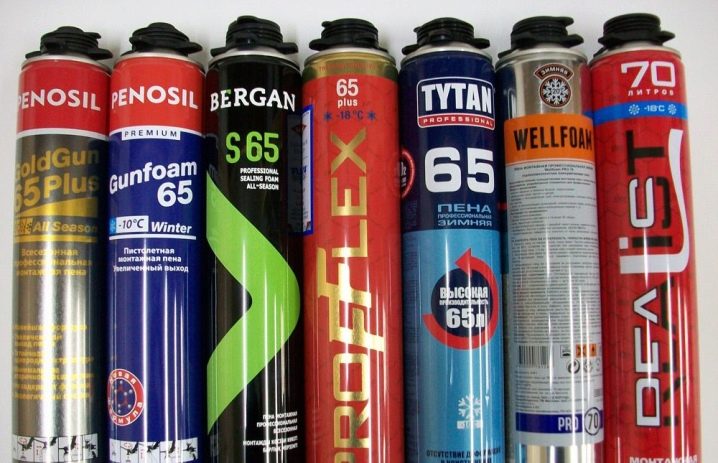
Features and properties
Polyurethane foam is a substance released in an aerosol can. It contains a liquid prepolymer which is displaced from the cylinder by a mixture of gases. Thanks to this composition, the polyurethane foam, displaced from the container, foams and expands under the influence of moisture. Then, during the polymerization process, the agent completely hardens. The result is a fairly strong substance - polyurethane foam, which fills all the necessary cavities, seams and hard-to-reach joints. A fairly large amount of work can be performed with one cylinder, which is facilitated by a significant coefficient of expansion of the substance.
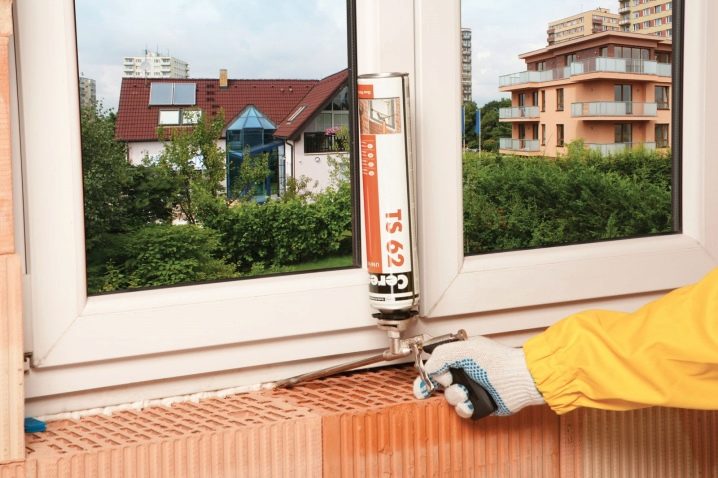
During the cold spring or fall, the use of winter foams is mandatory. If the air temperature drops below +5 C, then summer foams are no longer suitable for installation.
Material performance decreases with decreasing temperature. At negative temperatures, the amount of foam is reduced to a minimum. In addition, the layer may not harden properly, the substance during application will not be able to achieve the required consistency and will not form the required hermetic base. This problem can be solved by winter types of sealant, which ensure stable operation at temperatures down to -10 ° C. Therefore, in winter, it is necessary to use only special high-performance versions of polyurethane foam.
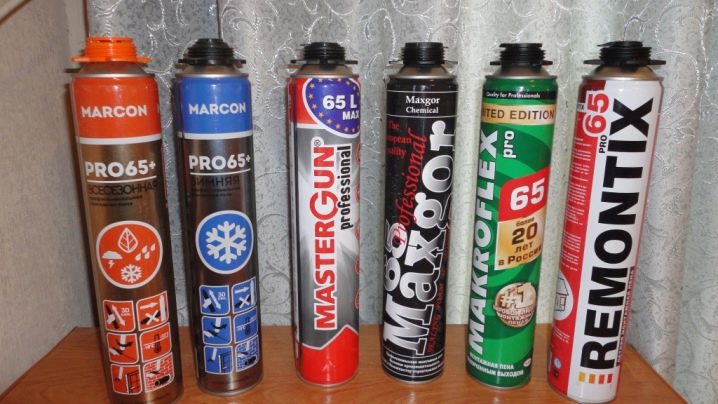
Winter polyurethane foam sealant differs from summer one mainly in the chemical composition of the propellant, the propellant, which makes the foam much more productive. According to the main characteristics, winter types of foaming sealants have the same adhesion and insulating properties as summer ones. At positive air temperatures, winter sealants work just as well, so they can be used in summer as well.
When using polyurethane foam, you should remember one important nuance. The curing time of polyurethane foam sealant directly depends on the ambient temperature and increases with each decrease in the degree. Experts advise not to proceed with further processing until the foam layer has completely hardened. In winter, this process takes longer than in summer. Failure to comply with the hardening time of the material leads to a deterioration in the properties of the polyurethane foam, as well as to a violation of the layer structure and dimensional stability.
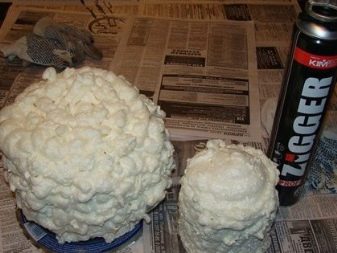
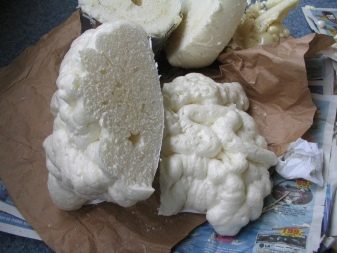
Types and technical characteristics
All existing polyurethane foam can be divided into several types according to various criteria.
By its constituent components, the product is:
- one-component;
- two-component.
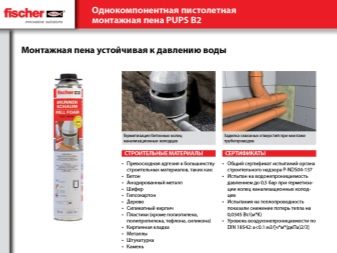
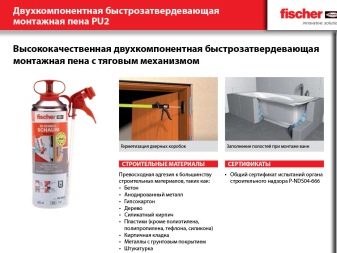
According to the ambient temperature during the application period, three types of foam are distinguished:
- Summer - marking on the package indicates the surface temperature at the time of application from + 5 ° to + 35 ° C, but at the same time the frost resistance of the hardened foam ranges from -50 ° to + 90 ° C.
- Winter - the temperature range, at the time of application, is mainly from -10 ° to + 35 ° C (some manufacturers were able to lower the lower limit to -20 ° C).
- All-season - the most versatile option, combining the properties of the two previous foams. Due to the special formula, the substance is able to expand in volume and quickly polymerize even in the cold.
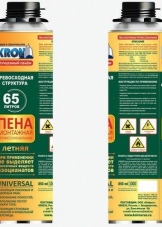



According to the method of application, the foam is:
- professional, requiring the use of a special dispensing gun;
- household or semi-professional, which does not require special devices (a special adapter tube is used for application).



According to the flammability class, the foam is divided into:
- fireproof or refractory B1;
- self-extinguishing B2;
- combustible B3.


There are several main points to the technical characteristics and properties of winter polyurethane foam:
- The ability to grip various parts during assembly.
- Frost resistance. In the cured state, the foam layer is able to withstand low temperatures, retaining all operational data.
- Good sound and heat insulation characteristics.
- The ability to fill and seal air voids, cavities in hard-to-reach places.

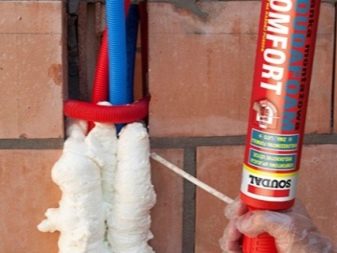
- Excellent compatibility with most building materials (except Teflon, silicone, polyethylene, oily surfaces, etc.).
- Porosity capable of providing stability in various combinations.
- Good adhesion, ensuring the ability of the substance to adhere to any substrate. This property helps to ensure a fast and high-quality installation process.
- Shrinkage. The lower this value, the stronger the connection will be. The substance possesses this characteristic after solidification.
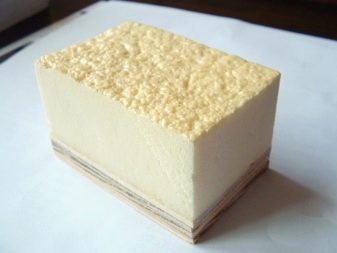
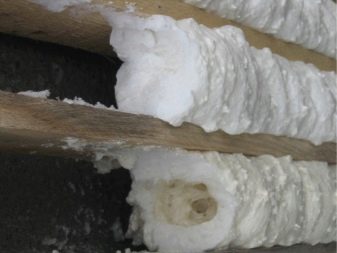
The quality characteristics of the assembly sealant depend on several parameters:
- Surface and ambient temperature at the time of use. In cold weather, it becomes more difficult to work with sealants, since cold air is characterized by low humidity. Under these conditions, the foam does not expand as well and does not harden quickly enough.
- Expansion - This property of the sealant affects the quality of the seal. If it expands excessively, it can lead to deformation of building structures.
- Viscosity of the substance - this parameter characterizes the ability of the sealant not to slip from the surface at the time of installation.
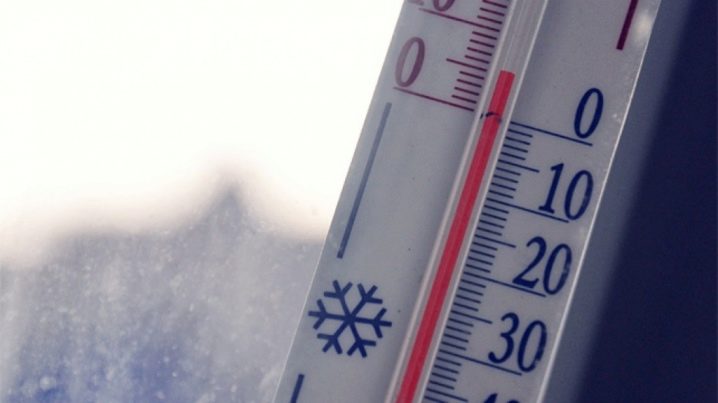
Scope of application
Due to its properties (high coefficient of expansion and excellent adhesion to most building materials), frost-resistant foam is widely used for both indoor and outdoor use.
This material is very popular among builders and is used as:
- sealant and sealant in structures for filling cracks, voids and joints;
- insulation and soundproofing material (due to its porosity);
- fastening material and retainer of individual parts during installation, for example, when installing windows, doors or wall insulation;
- heat insulator in heating or cooling systems;
- insulator for wiring distribution and electrical networks.
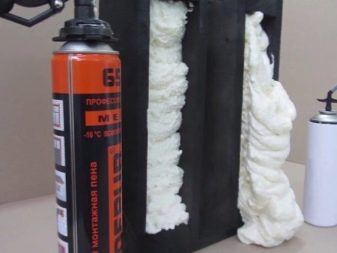
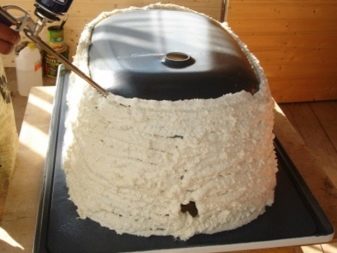
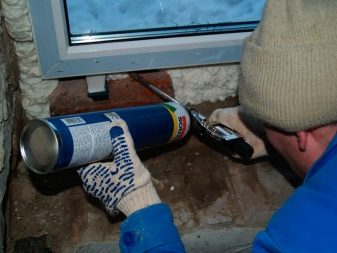
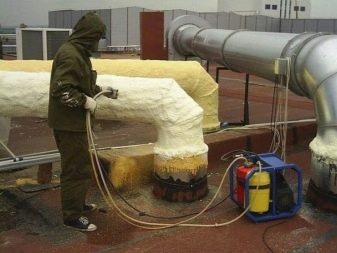
Manufacturers
Foam sealant Soudal... According to the technical characteristics, it is recognized as a high quality material, as evidenced by both the number of sales of this sealant and the positive feedback from satisfied customers.
Soudal is the world's largest manufacturer of polyurethane spray foam. The highest quality and a wide range of products allow the manufacturer to lead the building materials market for about 20 years. Soudal polyurethane foam has excellent performance characteristics, a homogeneous structure, a high degree of insulation and moisture resistance. The winter line of this manufacturer can be used at temperatures up to -250 ° C.
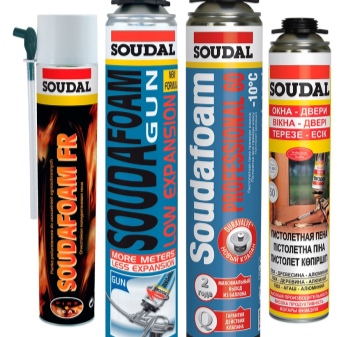
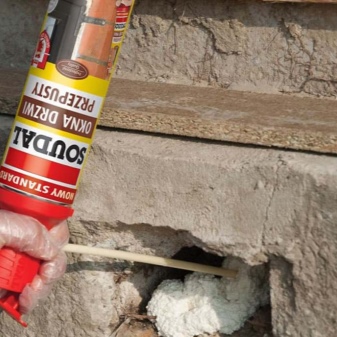
Another example of quality installation material is frost-resistant one-component aerosol foam. Penosil... It has good technical characteristics: high material yield, excellent adhesion, uniform uniform structure, small secondary expansion. It is a versatile professional assembly tool that can be used in all weather conditions.
Polyurethane foam Makrofleks Is a one-component polyurethane material with good adhesion, a long operating period, during which the material does not deteriorate. Despite the good technical characteristics, the product has a low cost.
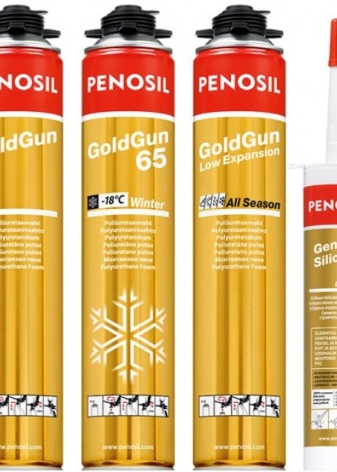
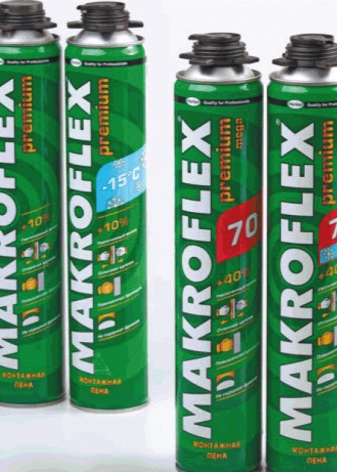
Foam glue Technonikol - good assembly material with excellent performance characteristics. This domestically produced product is convenient and effective in use, it is actively used for warming premises by installing expanded polystyrene plates, sheets of plasterboard, gypsum fiber, and aerated concrete blocks.
Excellent winter foam is considered Tytan Professionalrepresenting a new generation of polyurethane foams. This is an absolutely harmless material, safe even at the time of application. The product can be used at temperatures down to –200 ° C without preheating the cylinder.
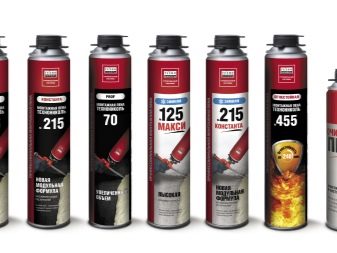

Before purchasing polyurethane foam, you must decide on the requirements for this material. Sales consultants in hardware stores will help you sort out the assortment and make the right choice.
Usage Tips
Before using polyurethane foam, it is worth remembering some basic rules:
- The temperature of the surface to which the foam will be applied must comply with the limits indicated on the package.
- A can of polyurethane foam should not be stored at temperatures below freezing. If the sealant was located anywhere at sub-zero temperatures, it must be warmed up to room temperature before use. Heating with warm water 30-500 ° C is possible, although the products of some manufacturers do not require such procedures. In any case, it is better to carefully study the instructions for use.
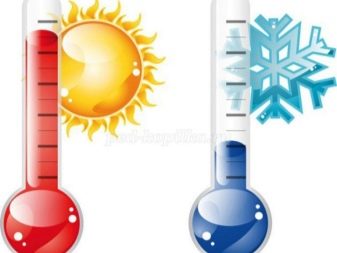
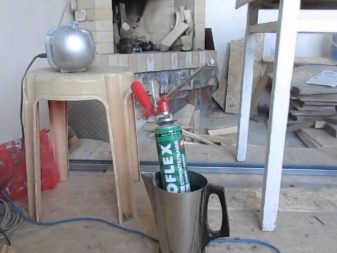
- Apply the foam while holding the balloon upside down. Cavities and joints should be filled with sealant approximately 1/3 of the volume. It should be remembered that the layer tends to expand during polymerization. The lower the temperature, the higher the viscosity of the material. The contents stick to the walls of the container, it becomes impossible to use the entire mixture. Valve clogging can occur if used horizontally.
- Shake well before use. This is necessary in order to mix the constituent components.

- The surfaces to be treated should be thoroughly cleaned of dust and debris. You can moisten them slightly with a spray bottle, but avoid accumulation of liquid. Otherwise, ice may form in such places, preventing the adhesion of materials.
- If the gap is more than 5 cm thick, it must be closed on the opposite side with cardboard, foam or other material.

- Further surface treatment should be carried out not earlier than after 24 hours. If necessary, you can apply another layer of foam.
- The cured foam must be protected from direct sunlight, otherwise the layer will become porous and brittle, which will reduce the performance of the material.
- If the composition has not been completely consumed, it can be used after a while.
A careful study of the manufacturer's advice on the use and storage of winter polyurethane foam will help you achieve good results in working with this material at any time of the year.
For more information on the use of different types of polyurethane foam, see the video.













The comment was sent successfully.